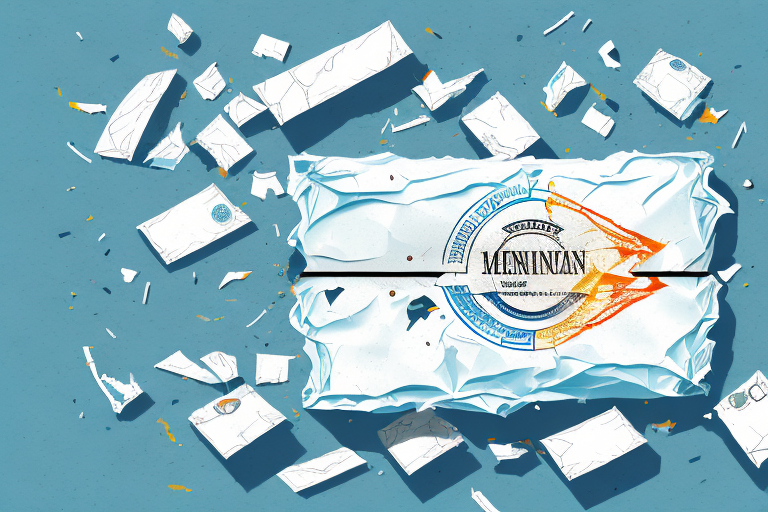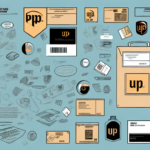UPS Package Damaged in Transit: What to Do Next
Receiving a damaged UPS package can be both frustrating and concerning, especially when valuable or fragile items are involved. Understanding the right steps to take can help you protect your rights and ensure proper compensation. This guide provides a comprehensive overview of how to handle a damaged UPS package, from identifying the damage to filing a successful insurance claim.
Identifying and Understanding Package Damage
How to Identify a Damaged UPS Package
Recognizing that your package has been damaged during transit is the first crucial step. Look for the following signs:
- Visible tears, punctures, or dents in the packaging
- Water damage or stains on the package
- Unusual sounds, such as broken glass, when the package is moved
- Signs of tampering, like broken or resealed tape or seals
Early identification allows you to take immediate action, which is essential for filing claims and receiving compensation.
Common Causes of Package Damage
Understanding the potential causes of package damage can help in both prevention and in discussing claims with UPS. Common causes include:
- Rough Handling: Packages can be subjected to excessive force during loading and unloading, leading to external and internal damage.
- Inadequate Packaging: Insufficient cushioning materials or using inappropriate packaging can result in items being damaged when the package is jostled.
- Improper Stacking: Overstacking in storage areas within transit vehicles can cause crushing and deformation of packages.
- Environmental Factors: Exposure to harsh weather conditions like rain, heat, or cold can deteriorate packaging or the contents inside.
According to the UPS Help Center, proper packaging is a critical factor in minimizing the risk of damage.
Your Rights as a UPS Customer
As a UPS package recipient, you have specific rights regarding damaged packages. UPS offers a Package Guarantee for qualifying shipments, which typically includes reimbursement for the retail value of the shipment plus shipping costs. However, several conditions apply:
- Packages must be properly packaged and labeled.
- Items must not be perishable, hazardous, or restricted without appropriate declarations.
- Claims must be filed within specific timeframes depending on the shipment type.
Review the UPS Claims Policy for detailed information on eligibility and procedures.
Filing a Successful Insurance Claim
Steps to Take When Receiving a Damaged Package
If you receive a damaged UPS package, follow these steps to protect your interests:
- Inspect Immediately: Carefully examine the package and its contents upon delivery.
- Document the Damage: Take clear photographs of the damaged packaging and items.
- Notify UPS: Contact UPS customer service as soon as possible to report the damage.
- Retain Packaging: Keep all packaging materials and the damaged items intact for inspection.
Failing to take immediate action may limit your ability to file a claim or receive compensation.
Documenting Damage for Your Claim
Accurate and thorough documentation is essential when filing an insurance claim with UPS. Proper documentation includes:
- Clear photos showing the extent of the damage to both packaging and contents
- Original receipts or invoices for the damaged items
- A detailed written description of the damage and how it occurred
Maintaining organized records will facilitate the claims process and support your case for compensation. For more details, refer to the UPS Claims Process.
Tips for a Successful UPS Insurance Claim
To increase the likelihood of a successful insurance claim with UPS, consider the following tips:
- Provide Detailed Documentation: Ensure all photos and descriptions accurately reflect the damage.
- Submit Claims Promptly: Adhere to UPS's deadlines for filing claims based on the shipment type.
- Follow Up: Stay in communication with UPS and promptly respond to any requests for additional information.
- Keep Records: Maintain copies of all correspondence and submitted documents related to the claim.
Additionally, UPS may require an inspection of the damaged package. Ensure the package remains intact until the inspection is completed.
Preventing Future Package Damage
Best Practices for Packaging
While not all damages can be avoided, implementing best practices can significantly reduce the risk of future package damage:
- Use Adequate Packaging Materials: Utilize bubble wrap, packing peanuts, or foam inserts to cushion items.
- Select the Right Box: Choose a sturdy, appropriately sized box to accommodate the contents without overloading.
- Properly Label Packages: Include handling instructions like "Fragile" or "This Side Up" to guide handlers.
- Secure Packaging: Ensure all items are securely packed to prevent movement within the box.
According to Business News Daily, proper packaging can reduce the likelihood of damage by up to 70%.
Selecting a Reliable Shipping Carrier
Choosing a reliable shipping carrier is essential for the safety of your packages. When selecting an alternative carrier to UPS, consider the following:
- Specialized Services: Carriers that offer specialized handling for fragile or high-value items.
- Faster Delivery Options: Carriers that provide expedited shipping for time-sensitive deliveries.
- Extended Tracking and Insurance: Enhanced tracking capabilities and higher insurance coverage limits.
- Regional Expertise: Carriers with a strong presence and efficient operations in specific geographic areas.
Evaluate carriers like FedEx or DHL to determine which best meets your shipping needs.
Debunking Common Myths about UPS Package Insurance
Several misconceptions surround UPS package insurance. Understanding the facts ensures that you make informed decisions regarding your shipments:
- Myth: All UPS packages are automatically insured.
- Fact: UPS provides limited liability coverage by default. Additional insurance must be purchased for higher-value items.
- Myth: UPS will cover the full value of any damaged item.
- Fact: Coverage is subject to terms and conditions, including proper packaging and declared value.
- Myth: Proper packaging eliminates the need for insurance.
- Fact: While proper packaging reduces damage risks, insurance provides financial protection against unforeseen incidents.
For more information, visit the UPS Claims Policy.
Conclusion
Receiving a damaged UPS package can be a stressful experience, but by understanding your rights and following the appropriate steps, you can seek proper compensation and prevent future issues. From immediate inspection and documentation to filing a successful insurance claim, proactive measures are key to managing damaged shipments effectively.
Implementing best practices for packaging and selecting reliable carriers can further minimize the risk of damage during transit. Additionally, debunking common myths about UPS package insurance ensures that you are well-informed and protected against potential losses.
For more detailed information on handling damaged packages and filing claims, refer to the UPS Claims Center and other reputable sources on shipping and logistics best practices.








